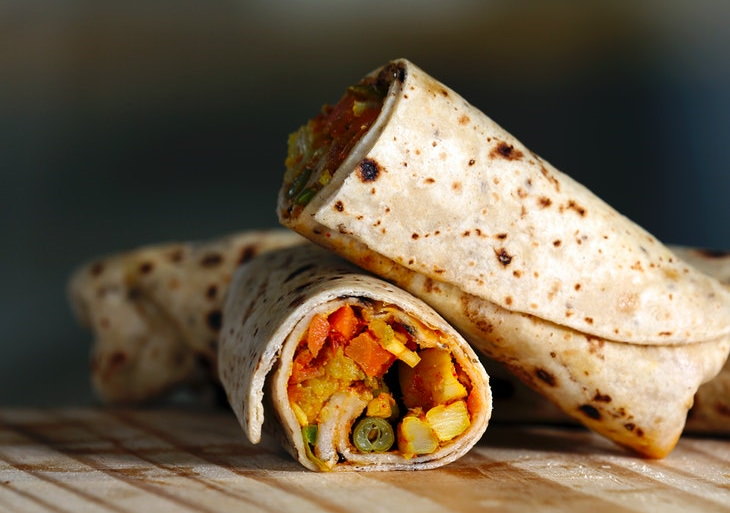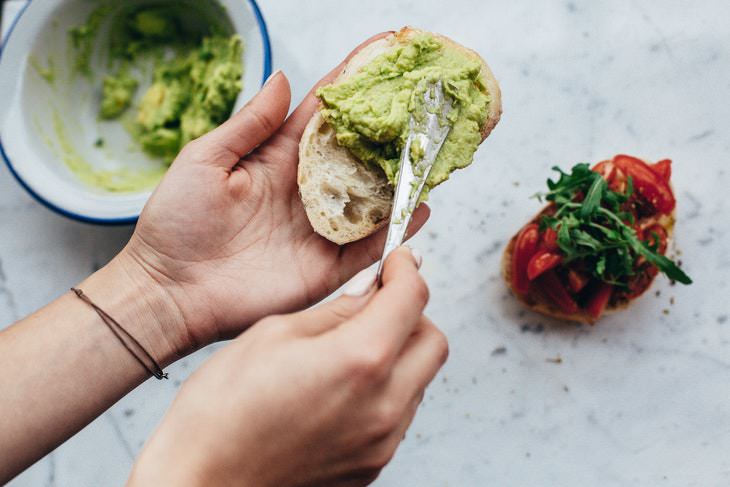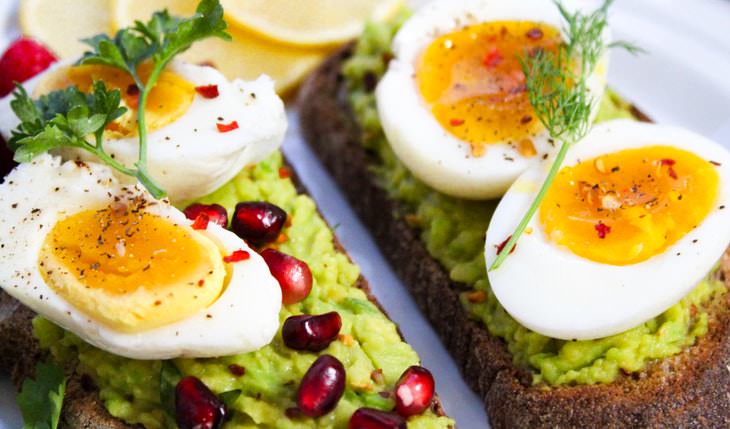1. Consider the bread
The bread is the basis of every sandwich. So, as you imagine, it’s pretty important to pick the right kind. Although there’s no set rule on what to look for, make sure that the bread you use is fewer than 150 calories per slice.
This way, you’ll be able to keep the entire sandwich under the recommended calorie count of about 400 calories.
Whole-grain bread is a good choice for most people because it contains more fiber. But you don’t have to limit yourself to a slice of bread either. You can easily replace the bread with a whole-wheat pita or tortilla, or even wrap your filling in a leaf of romaine lettuce.
2. Use homemade meat instead of store-bought cold cuts
If you’re not a vegetarian, giving up on salami, ham, bologna, and other cold cuts sounds like madness. Unfortunately, seeking alternatives to processed meats should be a priority for all of us because there’s a direct link between these store-bought meats and bowel cancer. Some studies claim that having just 25g (around 1 strip of bacon) of processed meat a day could increase your risk of developing bowel cancer by 20%.
So, instead of the deli meats and bacon, we recommend you prepare your own ham, turkey, schnitzel, or roasted chicken to use in a sandwich. This way, the meat that ends up in your sandwich skips several processing steps and injections of preservatives.
3. Be wary of traditional condiments
Butter, mayo, and ketchup may be the easiest condiments to add to your sandwich, but they’re not particularly nutritious and can be full of salt, saturated fat, or sugar. To boost the health potential of your sandwich, mash up an avocado or use some hummus, guacamole, or pesto to add some creaminess and moisture to your sandwiches.
You can even drizzle olive oil to get some of those healthy fats and antioxidants into your lunch. All of these healthier spreads contain plenty of nutrients and are much lower in calories than traditional condiments.
4. Pile on some pickles or olives
A healthy sandwich doesn’t have to be boring and bland. A great way to add some flavor to your sandwich is to add some pickles, olives, kimchi, sun-dried tomatoes, or capers into the mix. Get creative. Fermented foods like pickles and olives can improve your digestion and have a variety of health benefits. To read more about the health benefits of fermented foods, read our article 7 Health Benefits of Fermented Foods and 2 Recipes!
5. Don’t forget about the veggies
One of the main issues with ordinary sandwiches is not only the abundance of unhealthy ingredients but also the lack of healthy ones. Now, you already know what to subtract from your sandwiches - e.g. white bread, deli meats, and mayo - but it’s also just as important to add some vegetables into the mix. Any vegetables will do.
For an extra crunch and flavor, use sliced cucumbers, spinach, or tomatoes. But you can add roasted vegetables like eggplants or bell peppers just as well. According to Nicole Cormier, a registered dietitian, "The more colors you can add to your sandwich, the more phytochemicals, vitamins and minerals you'll be delivering to your body."
If all this sounds way too complicated, you can cheat the system and simply add a mini salad on the side to go with the sandwich.
6. Consider an alternative source of protein
Eating meat every day isn’t good for our health, but when we prepare a sandwich, we often fall back to meat-based sources of protein. We urge you to think outside of the box and add smoked fish, canned tuna, or even a soft-boiled egg in place of meat. You can also use plant proteins alone, such as beans, tofu, or hummus. For more sandwich-making tips from chefs, read our article titled 11 Common Sandwich Making Mistakes.
Share these tips with those who enjoy a good sandwich for lunch!




